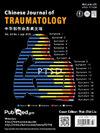NINJ1 impairs the anti-inflammatory function of hUC-MSCs with synergistic IFN-γ and TNF-α stimulation
IF 1.9
4区 医学
Q2 ORTHOPEDICS
引用次数: 0
Abstract
Purpose
To investigate the regulatory role of nerve injury-induced protein 1 (NINJ1) in the anti-inflammatory function of human umbilical cord mesenchymal stem cells (hUC-MSCs) co-stimulated by interferon-gamma (IFN-γ) and tumor necrosis factor-alpha (TNF-α).
Methods
hUC-MSCs were expanded in vitro using standard protocols, with stem cell characteristics confirmed by flow cytometry and multilineage differentiation assays. The immunomodulatory properties and cellular activity of cytokine-co-pretreated hUC-MSCs were systematically evaluated via quantitative reverse transcription RT-qPCR, lymphocyte proliferation suppression assays, and Cell Counting Kit-8 viability tests. Transcriptome sequencing, Western blotting and small interfering RNA interference were integrated to analyze the regulatory mechanisms of NINJ1 expression. Functional roles of NINJ1 in pretreated hUC-MSCs were elucidated through gene silencing combined with lactate dehydrogenase release assays, Annexin V/Propidium Iodide apoptosis analysis, macrophage co-culture models, and cytokine Enzyme-Linked Immunosorbent Assay. Therapeutic efficacy was validated in a cecal ligation and puncture-induced septic mouse model: 80 mice were randomly allocated into 4 experimental groups (n=20/group): sham group (laparotomy without cecal ligation); phosphate-buffered saline-treated group (cecal ligation and puncture (CLP) + 0.1 mL phosphate-buffered saline); hUC-MSCs (small interfering RNA (siRNA)-interferon-gamma and tumor necrosis factor-alpha co-stimulation (IT))-treated group (CLP + hUC-MSCs transfected with scrambled siRNA); and hUC-MSCs (siNINJ1-IT)-treated group (CLP + hUC-MSCs with NINJ1-targeting siRNA).
Results
hUC-MSCs demonstrated compliance with International Society for Cellular Therapy criteria, confirming their stem cell identity. IFN-γ/TNF-α co-pretreatment enhanced the immunosuppressive capacity of hUC-MSCs, accompanied by the reduction of cellular viability, while concurrently upregulating pro-inflammatory cytokines such as interleukin-6 and interleukin-1β. This co-stimulation significantly elevated NINJ1 expression in hUC-MSCs, whereas genetic silencing of NINJ1 effectively suppressed pro-inflammatory cytokine production and attenuated damage-associated molecular patterns release through inhibition of programmed plasma membrane rupture. Furthermore, the NINJ1 interference potentiated the ability of cytokine-pretreated hUC-MSCs to suppress LPS-induced pro-inflammatory responses in RAW264.7 macrophages. In cecal ligation and puncture-induced sepsis model, NINJ1-silenced hUC-MSCs exhibited enhanced therapeutic efficacy, manifested by reduced systemic inflammation and multi-organ damage.
Conclusion
Our findings shed new light on the immunomodulatory functions of cytokine-primed MSCs, offering groundbreaking insights for developing MSC-based therapies against inflammatory diseases via interfering the expression of NINJ1.
NINJ1通过IFN-γ和TNF-α协同刺激损害hUC-MSCs的抗炎功能。
目的:探讨神经损伤诱导蛋白1 (neuroinjury -induced protein 1, NINJ1)在干扰素-γ (IFN-γ)和肿瘤坏死因子-α (TNF-α)共同刺激的人脐带间充质干细胞(hUC-MSCs)抗炎功能中的调控作用。方法:采用标准方案体外扩增hUC-MSCs,并通过流式细胞术和多系分化实验证实其干细胞特征。通过定量逆转录RT-qPCR、淋巴细胞增殖抑制试验和细胞计数试剂盒-8活力试验,系统评估细胞因子共预处理的hUC-MSCs的免疫调节特性和细胞活性。结合转录组测序、Western blotting和小干扰RNA (small interfering RNA)干扰分析了NINJ1表达的调控机制。通过基因沉默联合乳酸脱氢酶释放试验、膜联蛋白V/碘化丙酸凋亡分析、巨噬细胞共培养模型和细胞因子酶联免疫吸附试验,阐明了NINJ1在预处理hUC-MSCs中的功能作用。采用盲肠结扎和穿刺性脓毒症小鼠模型验证治疗效果:80只小鼠随机分为4个实验组(n=20/组):假手术组(开腹不结扎盲肠);磷酸盐缓冲盐水处理组(盲肠结扎穿刺(CLP) + 0.1 mL磷酸盐缓冲盐水);hUC-MSCs(小干扰RNA (siRNA)-干扰素- γ和肿瘤坏死因子- α共刺激(IT))处理组(CLP +转染打乱siRNA的hUC-MSCs);和siNINJ1-IT处理组(CLP +带有ninj1靶向siRNA的hUC-MSCs)。结果:hUC-MSCs符合国际细胞治疗协会的标准,证实了它们的干细胞身份。IFN-γ/TNF-α共预处理可增强hUC-MSCs的免疫抑制能力,同时降低细胞活力,同时上调促炎细胞因子如白细胞介素-6和白细胞介素-1β。这种共刺激显著提高了hUC-MSCs中NINJ1的表达,而基因沉默NINJ1通过抑制程序性质膜破裂有效地抑制促炎细胞因子的产生和减轻损伤相关分子模式的释放。此外,NINJ1干扰增强了细胞因子预处理的hUC-MSCs抑制lps诱导的RAW264.7巨噬细胞的促炎反应的能力。在盲肠结扎和穿刺性脓毒症模型中,nin1沉默的hUC-MSCs表现出增强的治疗效果,表现为全身炎症和多器官损伤的减少。结论:我们的研究结果揭示了细胞因子引发的间充质干细胞的免疫调节功能,为开发基于间充质干细胞的治疗炎症性疾病的方法提供了突破性的见解。
本文章由计算机程序翻译,如有差异,请以英文原文为准。
求助全文
约1分钟内获得全文
求助全文
来源期刊

Chinese Journal of Traumatology
ORTHOPEDICS-
CiteScore
3.80
自引率
4.80%
发文量
1707
审稿时长
28 weeks
期刊介绍:
Chinese Journal of Traumatology (CJT, ISSN 1008-1275) was launched in 1998 and is a peer-reviewed English journal authorized by Chinese Association of Trauma, Chinese Medical Association. It is multidisciplinary and designed to provide the most current and relevant information for both the clinical and basic research in the field of traumatic medicine. CJT primarily publishes expert forums, original papers, case reports and so on. Topics cover trauma system and management, surgical procedures, acute care, rehabilitation, post-traumatic complications, translational medicine, traffic medicine and other related areas. The journal especially emphasizes clinical application, technique, surgical video, guideline, recommendations for more effective surgical approaches.
 求助内容:
求助内容: 应助结果提醒方式:
应助结果提醒方式:


